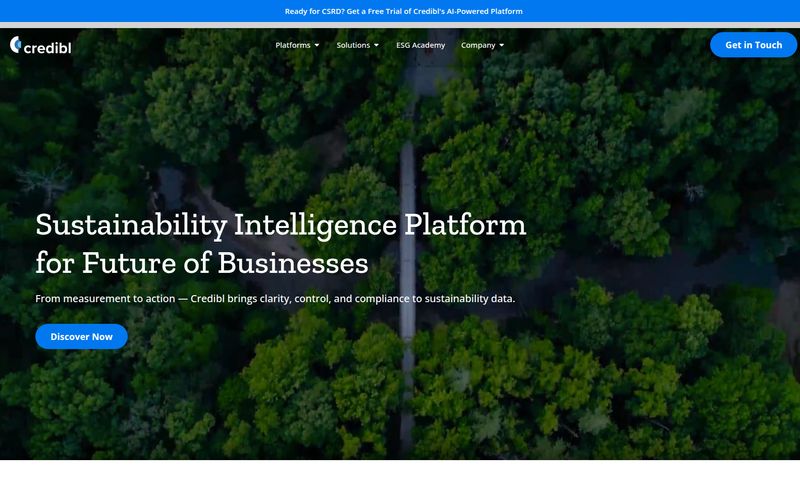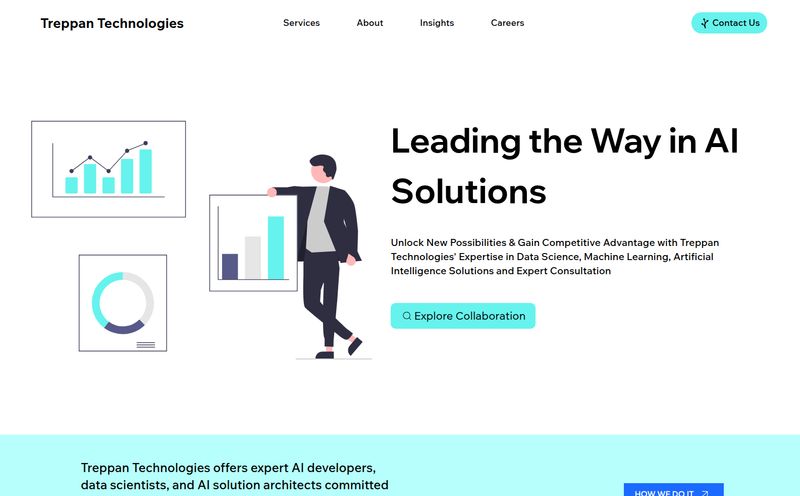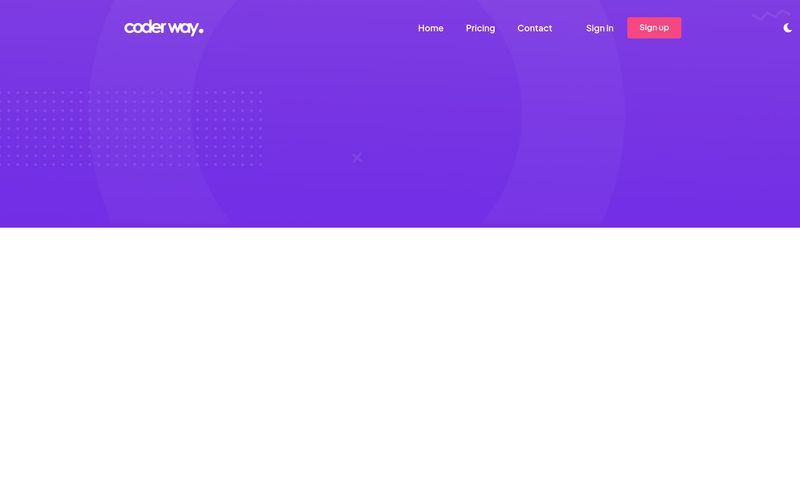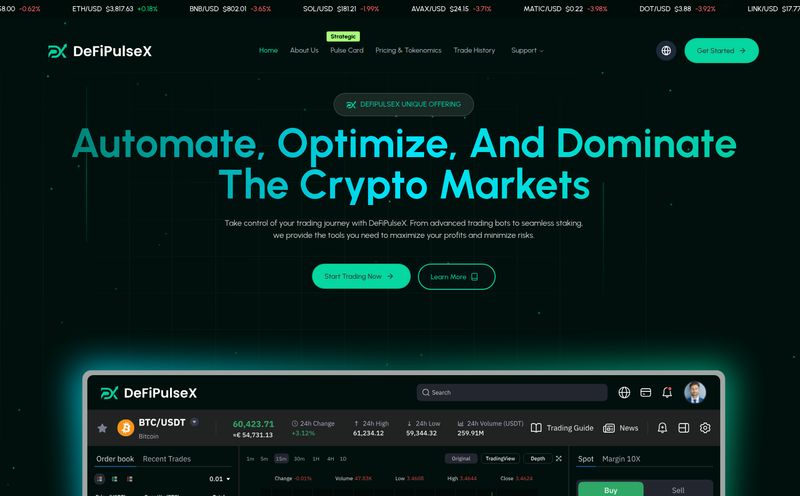I’ve been in the SEO and traffic game for years, and you start to see patterns. One of the biggest is the slow, often painful, digital transformation of old-school industries. And let's be honest, few industries are as old-school and complex as maritime shipping. For centuries, it’s been an world of paper trails, gut feelings, and information silos. A world where knowing the location of a ship was considered 'high-tech'.
But the seas are changing. Fast. Geopolitical storms are brewing constantly, supply chains are one stray container ship away from global gridlock (we all remember the Ever Given, right?), and compliance has become a minefield of sanctions and regulations. Trying to manage all that with a spreadsheet and a prayer? Good luck.
That's the chaotic backdrop for platforms like Windward. They’ve been making waves for a while now, promising to be the 'single source of truth' for the maritime world by using AI. A bold claim. So, I decided to take a closer look, peel back the marketing jargon, and see if this thing is really the navigational chart for the future or just another shiny object.
So, What Exactly is Windward?
In the simplest terms, Windward is a Maritime AI platform. Think of it as mission control for anyone involved in shipping, trading, or logistics. It sucks in a mind-boggling amount of data—we’re talking over 30 different sources, from satellite imagery and vessel transmissions to weather patterns and port records. Then, its AI engine, which they say is built on over 15 years of data and 2.2 million behavioral models, gets to work.
It doesn't just show you a dot on a map. It aims to tell you the story of that dot. Is it behaving suspiciously? Is its stated destination different from its actual trajectory? Is it linked to a sanctioned entity? It transforms all that messy, unstructured data into clean, predictive intelligence. It’s the difference between seeing a storm cloud on the horizon and having a meteorologist tell you its exact path, speed, and when you'll need an umbrella.
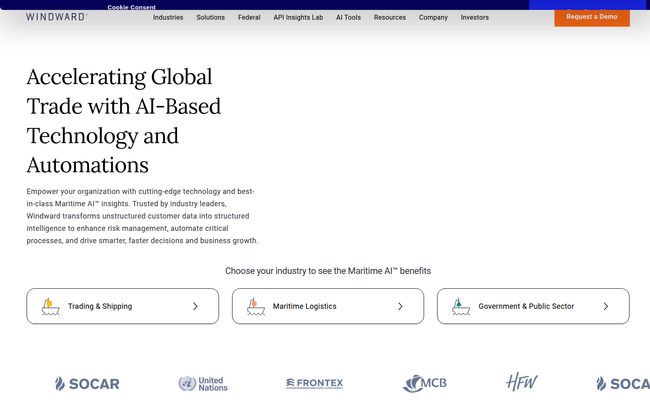
Visit Windward
Why Maritime AI Isn't Just a 'Nice-to-Have' Anymore
Years ago, a tool like this would've been seen as overkill. But the game has changed. I worked with a freight forwarder once who got absolutely burned. A vessel they'd chartered was flagged for sanctions mid-voyage. The fallout was a logistical and financial nightmare that took months to untangle. It wasn't just about losing money; their reputation took a serious hit.
This is the new reality. Deceptive shipping practices, like turning off AIS trackers or 'spoofing' locations to hide illicit activities, are rampant. Sanctions lists from the US, EU, and UK can change overnight. On top of that, customers and stakeholders are demanding hyper-accurate visibility. They don't just want to know where their container is; they want to know precisely when it will arrive, and they want to be warned of any delays before they happen. The old ways of doing business just can't keep up with the risk or the demand for transparency. You need a proactive shield, not just a reactive report.
A Look Under the Hood at Windward's Features
Alright, let's pop the hood. Windward isn't a single tool but a suite of solutions. Based on what I've gathered, here are the heavy hitters.
Maritime AI Risk & Compliance
This is the big one, the core of their offering. It’s designed to be a compliance officer’s best friend. Instead of manually checking dozens of watchlists, the platform automatically screens every vessel, owner, and company against global regulations. But the real magic is in the behavioral analysis. It flags things like:
- Dark Activity: When a vessel's AIS transmitter mysteriously goes offline in a high-risk area.
- Unusual Loitering: A ship hanging around a specific spot for no good reason.
- Ship-to-Ship Transfers: Identifying potentially illicit transfers of cargo at sea.
It generates a dynamic risk profile for every vessel in the world. Its a huge deal for anyone trying to avoid the crippling fines and reputational damage that come with compliance violations.
Ocean Freight Visibility
This goes way beyond a simple tracking number. Windward's solution here is about predictability. By analyzing everything from port congestion to historical vessel performance, it provides more accurate ETAs. This is critical for managing inventory, production lines, and customer expectations. A key part of this is their Demurrage and Detention (D&D) automation, which helps businesses predict and mitigate those dreaded, costly fees for containers that overstay their welcome at port. Anyone who has ever been surprised by a massive D&D bill knows how valuable this can be.
Early Detection and Advanced Intelligence
This is where Windward gets a little bit Minority Report. The platform is built to connect dots that a human analyst might miss. By integrating intelligence from their API Insights Lab, they can surface non-obvious risks and opportunities. For government and public sector clients, this means identifying threats to maritime infrastructure or tracking illegal fishing operations. For commercial users, it might mean spotting a new, more efficient shipping route or getting an early warning about a regional disruption that could impact their supply chain.
My Honest Take: The Good, The Bad, and The Murky
No platform is perfect, and as an analyst, I'm naturally skeptical. Here's my breakdown of Windward.
The Things I Genuinely Like
First off, the sheer ambition is impressive. The goal of creating a comprehensive risk profile for every vessel is massive. The true 360-degree view they talk about feels closer to reality here than with many other platforms I've seen. The way it translates a hurricane of unstructured data into a simple, actionable risk score is, frankly, elegant. I also have to applaud their focus on predictive insights. In a world that's always reacting, being able to act proactively is a superpower.
Some Potential Hurdles to Consider
Now, let's be real. This isn't a plug-and-play app you download to your phone. Implementing a system like Windward requires integration into your existing workflows. That takes time, resources, and buy-in from your team. There will almost certainly be a learning curve to get the maximum value out of its deep well of features. You can't just hand this to an intern and expect miracles; it requires a bit of commitment.
And the Big Question: What's the Price Tag?
If you're looking for a pricing page on their website, you'll end up on their clever "Page lost at sea" 404. Windward doesn't list its prices publicly, which is standard practice for high-end, enterprise-grade SaaS platforms. The cost will likely depend on the size of your operation, the specific modules you need, and the volume of queries you'll be running. To get a number, you’ll have to do what the site prompts: Request a Demo. It's a bit of a black box, which can be frustrating, but it also makes sense given the tailored nature of the service.
The Final Verdict: Is Windward the Future of Shipping?
So, is Windward the ultimate solution? For companies still navigating the maritime world with outdated tools, it presents a compelling case for a massive upgrade. It directly addresses the most pressing modern challenges: risk, compliance, and visibility.
It's not a magic wand. It requires investment and integration. But in an industry where one mistake can cost millions and tarnish a reputation built over decades, the cost of not having this kind of intelligence is getting higher every day. Windward feels less like a simple software and more like a fundamental shift in how maritime business is done—moving from reactive problem-solving to proactive, data-driven strategy. And in the choppy waters of global trade, that kind of clear-sighted navigation is priceless.
Frequently Asked Questions (FAQs)
- 1. What is Windward in simple terms?
- Windward is a maritime AI company that acts like an intelligence platform for the global shipping industry. It analyzes data from dozens of sources to provide predictive insights on everything from vessel risk and sanctions compliance to accurate shipment ETAs.
- 2. How does Windward's AI actually work?
- It uses machine learning models trained on over 15 years of maritime data. The AI analyzes vessel behaviors, ownership structures, and shipping routes to identify patterns and flag anomalies that would be invisible to the human eye, creating a dynamic risk score for each vessel.
- 3. Is Windward only for large corporations and governments?
- While its powerful features are a natural fit for large enterprises and government agencies, a wide range of players in the maritime ecosystem, including freight forwarders, commodity traders, and shipping liners of various sizes, can benefit from its risk management and visibility tools.
- 4. How can I find out how much Windward costs?
- Windward uses a custom pricing model. There is no public price list. You need to contact their sales team and request a demo to get a quote tailored to your company's specific needs.
- 5. What kind of risks can Windward help mitigate?
- The platform helps mitigate a wide range of risks, including sanctions compliance violations, engagement in deceptive shipping practices (like illegal cargo transfers), supply chain disruptions from port congestion, and unexpected demurrage and detention fees.
